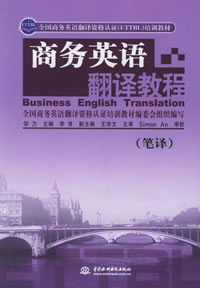专业学术写作练习在翻译教育过程中的意义
作者:古龙 2009-07-04




语际翻译公司 转载请注明https://www.scientrans.com
∗本栏目部分文章内容来自互联网,部分已经过本站编辑和整理,如有版权事宜请联系Email/MSN jesczhao@hotmail.com
The Gap move indicates that there is a gap in knowledge or a problem in the territory. The gap move is again very similar to the second swalesian introduction move known as "establishing a niche." Like the territorial move, the gap can also be placed either in the 'real world' (for instance environmental, commercial, or financial problems), or in the research world (for example pointing out that something is not known or not known with certainty, or needs to be known).
An important aspect of this move is placing one's work in relation to the consensus in the field. The researcher needs to be innovative, yet the proposed research has to remain within the constraints of the field. Citation of sources helps a great deal in solving this dilemma.
The Goal move is a statement of the aim, or general objective of the study. Depending on its formulation, the real-world element may be present or the research territory element may dominate.
The Means move specifies how the goal will be achieved. This move describes the methods, procedures, plans of action, and tasks that are to lead to the goal.
The Reporting Previous Research move consists of reporting or referring to earlier research in the field, either by the proposers themselves or by others.
Using the Achievements move, the proposals present their anticipated results, findings, or outcomes of the study.
The Benefits move comprises intended or projected outcomes of the study, presented in terms of their usefulness and value to the world outside, the study itself, or the domain of research in itself.
The Competence Claim move introduces the research group, or its responsible members. It makes a statement to the effect that the research group is well qualified, experienced, and generally capable of carrying out the tasks it proposes to undertake.
The Importance Claim move which makes out the proposal, its objectives, anticipated outcomes, or the territory as particularly important or topical, much needed or urgent with respect to either the 'real world' or to the research field.
No matter how persuasive the tone of the proposal, it may be rejected. In general terms, proposals are rejected because of:
a) No trust: For one reason or another, the reader does not trust the writers, their organization, or members of the given profession in general.
b) No need: The reader doesn't perceive a problem.
c) No desire: The reader perceived a problem but doesn't believe that it is sufficiently important to worry about.
d) No urgency: The reader perceives a problem and would like it solved but has higher priorities at the moment.
e) No value: The reader perceived a problem and would like it to be solved, but doesn't believe that the proposed solution will provide an adequate return on investment (Bowman & Branchaw 1992).
This list shows well the differences between solicited and unsolicited proposals. If we prepare a solicited proposal, it is unlikely that they would be rejected on (b) and (c). Obviously the reader's perception is depends on how detailed and unambiguous the RFP was. This is also true in the case of (d). "No trust" may be the case regardless of whether the proposal is solicited or unsolicited.
Beside of this, it is useful to see the following, more detailed list of possible causes for rejection.
1. The proposer did not demonstrate a clear understanding of the problem.
2. The proposal did not arrive by the submission deadline.
3. The information requested in the RFP was not provided.
4. The objectives were not well-defined.
5. The wrong audience was addressed.
6. The procedures and methodology were not specific.
7. The overall design was questionable.
8. The proposal lacked evidence of intent to meet all terms and conditions specified in the RFP.
9. Cost estimates were no
- 评论
- seme:文章内容文章内容文章内容文章内容文章内容文章内容文章内容文章内容文章内容 章内容文章内容文章内容文章内容文章内容
- seme:文章内容文章内容文章内容文章内容文章内容文章内容文章内容文章内容文章内容 章内容文章内容文章内容文章内容文章内容

- 专业学术写作练习在翻译教育过程中的意义
2009-6-10 23:54:51 - Technical and Academic Writing in the education of translators Genre-based writing instru...
- 美式英语和英式英语的区别是什么
2009-6-10 18:31:08 - 学英文的人有时候会注意到英式英文与美式英文的差异。其实世界上有很多种类的英文,不只英式和美式两种而已。光是在美国境内就有好多种不同的美式英文的方言。如果你在美国波士顿、纽约、迈...
- 第四届IEEE生物信息与生…
2009-6-30 19:42:01 - 基本信息 主办单位: 四川大学,IEEE生物医学工程协会(EMBS) 承办单位 开始日期 2010/06/18 结束日期 截稿日期 2009/1...
- 第九届全国光电技术学术…
2009-6-30 19:35:58 - 基本信息主办单位: 中国宇航学会光电技术专业委员会承办单位 开始日期 2009/11/01结束日期 截稿日期 2009...
















